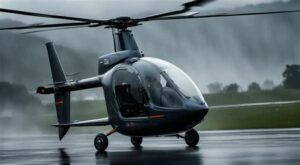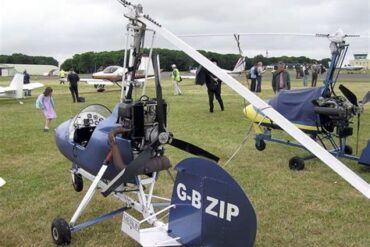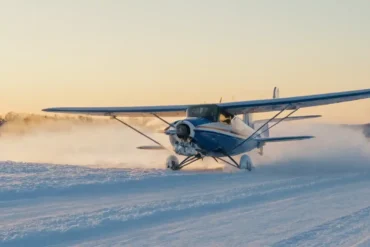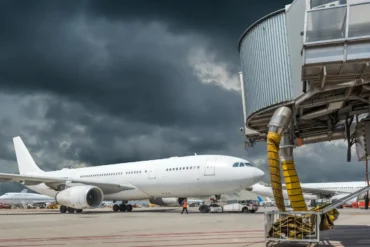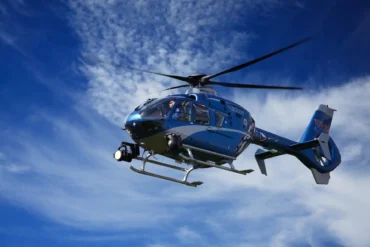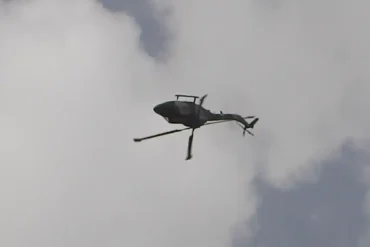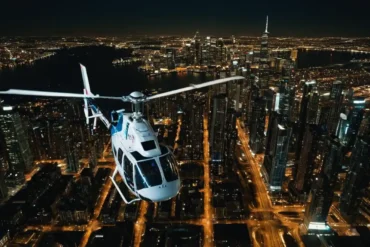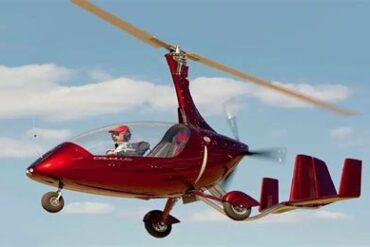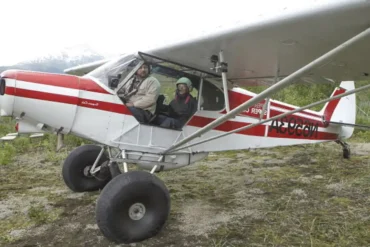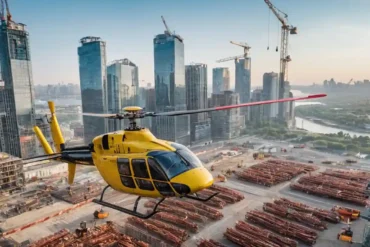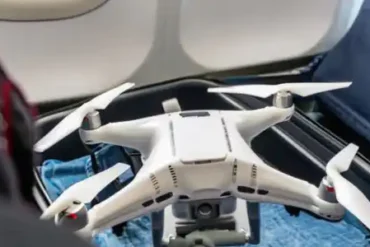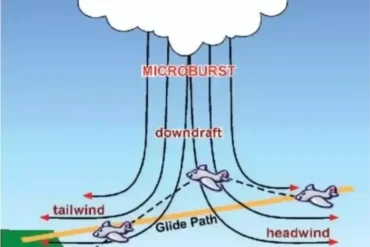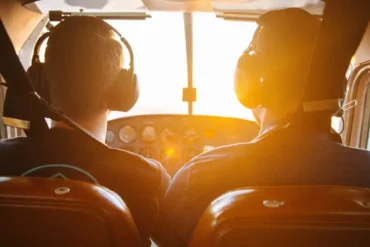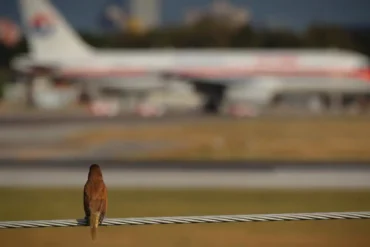Gyrocopters, also known as autogyros or gyroplanes, are unique aircraft that use a rotor to generate lift, similar to a helicopter, but rely on an engine-driven propeller for thrust, like an airplane. They offer a distinctive flying experience that combines elements of both helicopters and fixed-wing aircraft. However, when it comes to weather conditions, particularly rain, there are important considerations that pilots must take into account. In this comprehensive article, we will explore whether a gyrocopter can fly in rain, the potential challenges, and the precautions that must be taken to ensure a safe flight.
Understanding Gyrocopter Aerodynamics and Weather Sensitivity
Gyrocopters are relatively light and agile aircraft, which makes them sensitive to weather conditions. Unlike helicopters, gyrocopters do not have powered rotors. Instead, the rotor spins freely due to the air moving through it, a phenomenon known as autorotation. This means that gyrocopters are particularly susceptible to changes in air density, turbulence, and other weather-related factors.
Rain and Rotor Performance
One of the most significant concerns when flying a gyrocopter in the rain is how the moisture affects the rotor blades. Rain can lead to a decrease in lift generated by the rotor. Water droplets on the rotor blades can alter the airflow, disrupting the smooth passage of air over the surface. This disruption can cause a reduction in lift, leading to a decrease in altitude or the need for increased power to maintain altitude.
Moreover, heavy rain can add weight to the rotor blades, which can affect the balance of the rotor system. This added weight may cause uneven rotor speed or oscillations, further complicating the flight dynamics.
Visibility Issues
Rain inevitably leads to reduced visibility, which is a critical factor for any pilot. In a gyrocopter, where the pilot typically relies on visual references for navigation and orientation, poor visibility can be particularly hazardous. Flying in rain can obscure the horizon, making it challenging to maintain level flight and avoid obstacles. Additionally, rain can impair the visibility of crucial instruments and gauges, adding to the pilot’s workload.
Impact on Engine and Propeller Performance
The engine and propeller of a gyrocopter are also affected by rain. Water ingestion into the engine can cause power loss or even engine failure in extreme cases. Gyrocopter engines, often two-stroke or four-stroke engines, are not always equipped with advanced filtration systems found in larger aircraft, making them more susceptible to water-related issues.
The propeller, which provides the thrust needed for forward movement, can also be affected by rain. Water on the propeller blades can create drag, reducing the efficiency of the propeller and requiring more power to maintain speed. In heavy rain, this drag can become significant enough to impact overall performance.
Safety Precautions for Flying a Gyrocopter in Rain
Given the potential challenges associated with flying a gyrocopter in rain, it is crucial to take appropriate safety precautions. While it is technically possible to fly in light rain, pilots must carefully assess the conditions and be prepared for the unique challenges presented by wet weather.
Pre-Flight Preparation
Before considering a flight in rainy conditions, thorough pre-flight preparation is essential. This includes checking the weather forecast for the entire duration of the flight, with particular attention to precipitation levels, visibility, and wind conditions. Pilots should also ensure that their gyrocopter is in excellent mechanical condition, with particular attention to the rotor blades, engine, and propeller.
It is advisable to apply a water-repellent coating to the rotor blades and propeller. This can help reduce the accumulation of water and maintain optimal performance during flight. Additionally, pilots should ensure that all instruments and navigation systems are fully functional, as they may become even more critical in poor weather conditions.
Flight Planning and Route Considerations
When planning a flight in potential rain, the route should be chosen with care. Pilots should avoid areas with known turbulent weather or strong winds, as these conditions can be exacerbated by rain. It is also wise to plan for alternative landing sites along the route in case the weather deteriorates beyond safe flying conditions.
Pilots should consider limiting their flight duration and staying closer to their departure point, ensuring a quick return if conditions worsen. Additionally, flying at lower altitudes can sometimes provide better visibility below cloud layers, but this must be balanced with the need to avoid obstacles and maintain a safe distance from the ground.
In-Flight Adjustments
Once in the air, pilots must be vigilant and ready to make adjustments as needed. This includes monitoring rotor speed and engine performance closely, as well as staying alert to any changes in handling or stability. If visibility becomes a concern, reducing speed and increasing altitude slightly can help, but the pilot must always be prepared to make a safe landing if conditions deteriorate.
In the event of heavy rain or significant turbulence, it is often best to cut the flight short and land as soon as it is safe to do so. Safety should always be the top priority, and the risk of continuing in adverse conditions should be carefully weighed.
Legal and Regulatory Considerations
In addition to the practical challenges of flying a gyrocopter in rain, pilots must also consider legal and regulatory requirements. Many aviation authorities have specific regulations regarding weather conditions and the minimum requirements for safe flight. These may include visibility minimums, cloud clearance, and other factors that could be impacted by rain.
VFR and IFR Flight Rules
Gyrocopters are typically operated under Visual Flight Rules (VFR), which require the pilot to maintain visual reference to the ground and other obstacles. VFR conditions generally require a certain level of visibility and distance from clouds, both of which can be compromised by rain. In many cases, flying in rain may not meet VFR requirements, making the flight illegal or unsafe.
Some gyrocopters are equipped for Instrument Flight Rules (IFR), which allow the pilot to fly without visual reference, relying solely on instruments. However, IFR-rated gyrocopters are less common, and IFR flight requires significant training and certification. Even with IFR capability, flying in rain still presents challenges, particularly if the rain is accompanied by turbulence or other adverse conditions.
Insurance and Liability
Pilots must also consider the implications of flying in rain from an insurance and liability perspective. If a flight in rain leads to an accident or damage, insurance coverage may be affected, particularly if the pilot is found to have violated VFR or IFR regulations. It is essential to review insurance policies and ensure compliance with all legal requirements before undertaking a flight in adverse weather.
Conclusion: Weighing the Risks and Making Informed Decisions
While it is possible for a gyrocopter to fly in rain, it is not without significant risks. The unique design and operating characteristics of gyrocopters make them particularly sensitive to weather conditions, and rain can exacerbate challenges related to lift, visibility, and engine performance.
Pilots must carefully assess the weather conditions, ensure their aircraft is well-prepared, and be ready to make in-flight adjustments as needed. In many cases, the best decision may be to delay the flight until conditions improve. Safety should always be the top priority, and the risks of flying in rain must be weighed against the potential benefits.
Ultimately, the decision to fly a gyrocopter in rain should be made with caution, a thorough understanding of the aircraft’s limitations, and a commitment to adhering to all safety and regulatory guidelines. By doing so, pilots can ensure that they make informed decisions that prioritize both their safety and the integrity of their aircraft.
